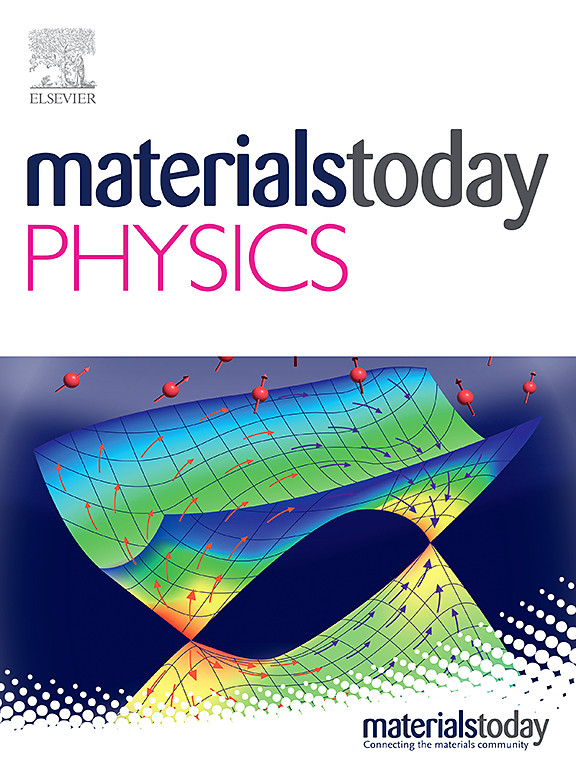Linear dielectric ceramics for near-zero loss high-capacitance energy storage
IF 10
2区 材料科学
Q1 MATERIALS SCIENCE, MULTIDISCIPLINARY
引用次数: 0
Abstract
High energy-density (Wrec) dielectric capacitors have gained a focal point in the field of power electronic systems. In this study, high energy storage density materials with near-zero loss were obtained by constructing different types of defect dipoles in linear dielectric ceramics. Mg2+and Nb5+ are strategically chosen as acceptor/donor ions, effectively replacing Ti4+ within Ca0.5Sr0.5TiO3-based ceramics. The results indicate that under an applied electric field, specific defects such as and , can effectively regulate and electron movement, significantly reducing losses. Furthermore, high-density insulating grain boundaries, reduced concentrations and diminished carrier mobility contribute to enhanced resistivity, resulting in high Wrec ∼7.62 J/cm3 and η ∼92 % at 640 kV/cm, making it one of the most promising linear dielectrics to date. Notably, Wrec and η remain remarkably stable across a broad range of frequencies (1–500 Hz), temperatures (25–175 °C) and numerous cycles (up to 106). Additionally, finite element software was used to simulate the distribution of dielectric constant, electric potential, and local electric field, further verifying the correlation between microstructure and breakdown resistance. This innovative work provides a sustainable strategy to optimize the energy storage capacity of lead-free ceramics over a wide temperature range through strategic manipulation of defects.
用于近零损耗高电容储能的线性介质陶瓷
高能量密度(Wrec)电介质电容器已成为电力电子系统领域的焦点。在这项研究中,通过在线性介电陶瓷中构建不同类型的缺陷偶极子,获得了近零损耗的高能量存储密度材料。在 Ca0.5Sr0.5TiO3 基陶瓷中,Mg2+ 和 Nb5+ 被战略性地选择为接受/捐赠离子,有效地取代了 Ti4+。结果表明,在外加电场作用下,特定的缺陷(如和)可以有效地调节和电子运动,从而显著降低损耗。此外,高密度绝缘晶界、浓度降低和载流子迁移率减小也有助于增强电阻率,从而在 640 kV/cm 时获得较高的 Wrec ∼ 7.62 J/cm3 和 η ∼ 92%,使其成为迄今最有前途的线性电介质之一。值得注意的是,Wrec 和 η 在广泛的频率(1-500 Hz)、温度(25-175 °C)和无数次循环(多达 106 次)中都保持着显著的稳定性。此外,还使用有限元软件模拟了介电常数、电动势和局部电场的分布,进一步验证了微观结构与击穿电阻之间的相关性。这项创新工作提供了一种可持续的策略,通过对缺陷的策略性处理,在宽温度范围内优化无铅陶瓷的储能能力。
本文章由计算机程序翻译,如有差异,请以英文原文为准。
求助全文
约1分钟内获得全文
求助全文
来源期刊

Materials Today Physics
Materials Science-General Materials Science
CiteScore
14.00
自引率
7.80%
发文量
284
审稿时长
15 days
期刊介绍:
Materials Today Physics is a multi-disciplinary journal focused on the physics of materials, encompassing both the physical properties and materials synthesis. Operating at the interface of physics and materials science, this journal covers one of the largest and most dynamic fields within physical science. The forefront research in materials physics is driving advancements in new materials, uncovering new physics, and fostering novel applications at an unprecedented pace.
 求助内容:
求助内容: 应助结果提醒方式:
应助结果提醒方式:


